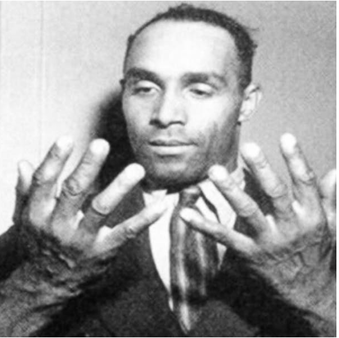
The reign of the Terror Bandits began with a gun and ended with a scalpel. On October 9th 1926, two men stole a car at 1350 Vallejo Street. During the next forty minutes they robbed two cabbies and two pedestrians at gunpoint. As police responded to the crimes the bandits moved into the south of Market Street area. At 8th and Bryant streets, the robbers accosted a group including Mrs. Emma Bird and her 13-year old daughter. They dragged Mrs. Bird into the car and drove off. Two blocks farther after flashing a light in her face and deciding, "She ain't young enough," they threw her from the automobile.
The auto bandits then doubled back down to Fifth Street and Harrison, where they pistol-whipped and robbed two more victims, then stole the evening’s receipts from a Lombard Street poolroom, shooting two patrons in the process. But they were just getting started.
Crossing back over Market Street they drove to Powell and Washington, where they fatally shot Mario Pagano, when he resisted them. SFPD Chief Dan O'Brien, and Sergeant Neely, who were in the area, found Pagano dying in the street, and exchanged shots with the bandits. The killers robbed three more people before ending the spree at 2:30 a.m. In all, the robbers made about $400 and assorted pieces of jewelry from the dozen robberies. Ten hours later police recovered the stolen car but had little to go on other than a description of two young white males.
Two days later, on Monday, the terror began again. Two men flagged down Walther Swanson, a Yellow Cab driver, murdered him at 16th and Third Street and threw his body under a viaduct. Using his cab they drove to Mariposa, Street where they stopped and asked a man, for the time. When the man took out his watch, they shot him to death. The killers continued their spree on Potrero Hill where they robbed nine more people, killing one of them.
They were robbing a man at a gas station when Officer Dorsey Henderson drove up. A running gun battle ensued which ended at 16th and Mississippi, where the killers smashed the cab into the curb. They fled through a lumberyard, stole another car and disappeared down the Bayshore highway. The entire rampage was over in less than an hour. Chief O'Brien ordered the mobilization of the entire police department. Supplemented by volunteers, force of 2,000 men was soon patrolling the streets with orders to "shoot to kill."
For the next week, as police blanketed the city, detectives worked tirelessly. They got a tip from an underworld source and raided a bootleg joint on Waller Street where they found items taken in the robberies.
The detectives picked up Lawrence Weeks, 22. who quickly confessed to the Saturday night holdups. Weeks named Clarence "Buck" Kelly, 22, as ringleader of the group. Kelly, a sometimes cabdriver and club boxer was a well-known South of Market thug with a criminal record dating back to age 16. In April 1926, he was arrested for rape and his case was pending at the time of the murders.
Police surrounded the apartment in South Park where Kelley lived with his family. As Kelly tried to escape down the back stairs, he was shot twice by detectives and was taken to San Francisco General Hospital in critical condition. He refused an operation, stating, “ I want to die right now. I don’t want to live and have the cops hang me.” He was guarded by a squad of heavily armed police to protect him from being lynched by angry cab drivers
Police soon arrested a third man, 17-year-old Michael Papadaches. After indicting the three men the grand jury urged the passing of a national bill to restrict the sale and use of firearms, citing the ease in which the bandits procured their weapons.
At the trial Kelly denied everything but the evidence against him was overwhelming. His gun was matched to the killings; eyewitnesses identified him and his co defendant, Michael Papadaches, testified against him. After only 30 minutes of deliberation, the jury found Kelly guilty on three counts of first-degree murder.
Kelly was sentenced to death and sent to San Quentin, where his father, John, was serving time on a robbery conviction. Neither father nor son requested to see each other. On May 11, 1927, after an unsuccessful appeal, Buck Kelly was hung in San Quentin.
But the unkindest cut of all was yet to come. In a classic example of adding insult to injury, Dr Leo Stanley, San Quentin’s Chief Surgeon, removed Kelly’s testicles to be later implanted into an older man. This cutting edge procedure, known as “gland therapy” was promoted at the time as a treatment for afflictions such as sexual dysfunction and dementia. There was a scandal when the operation became public knowledge, though many came to Dr Stanley’s defense. The San Francisco Examiner supported Dr Stanley in an editorial entitled “San Quentin’s Valuable Work For Science Should Continue,” and the furor died down.


 RSS Feed
RSS Feed